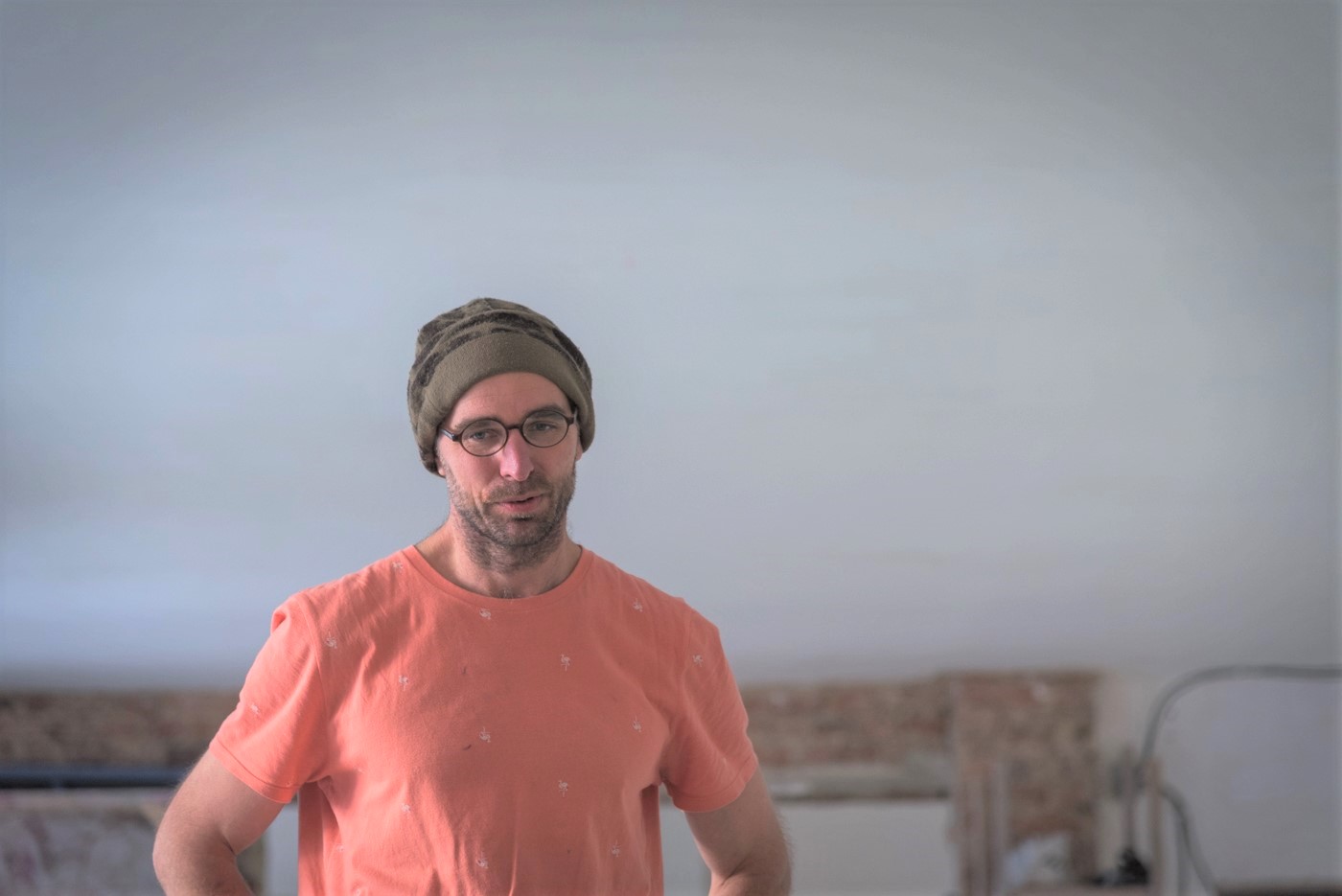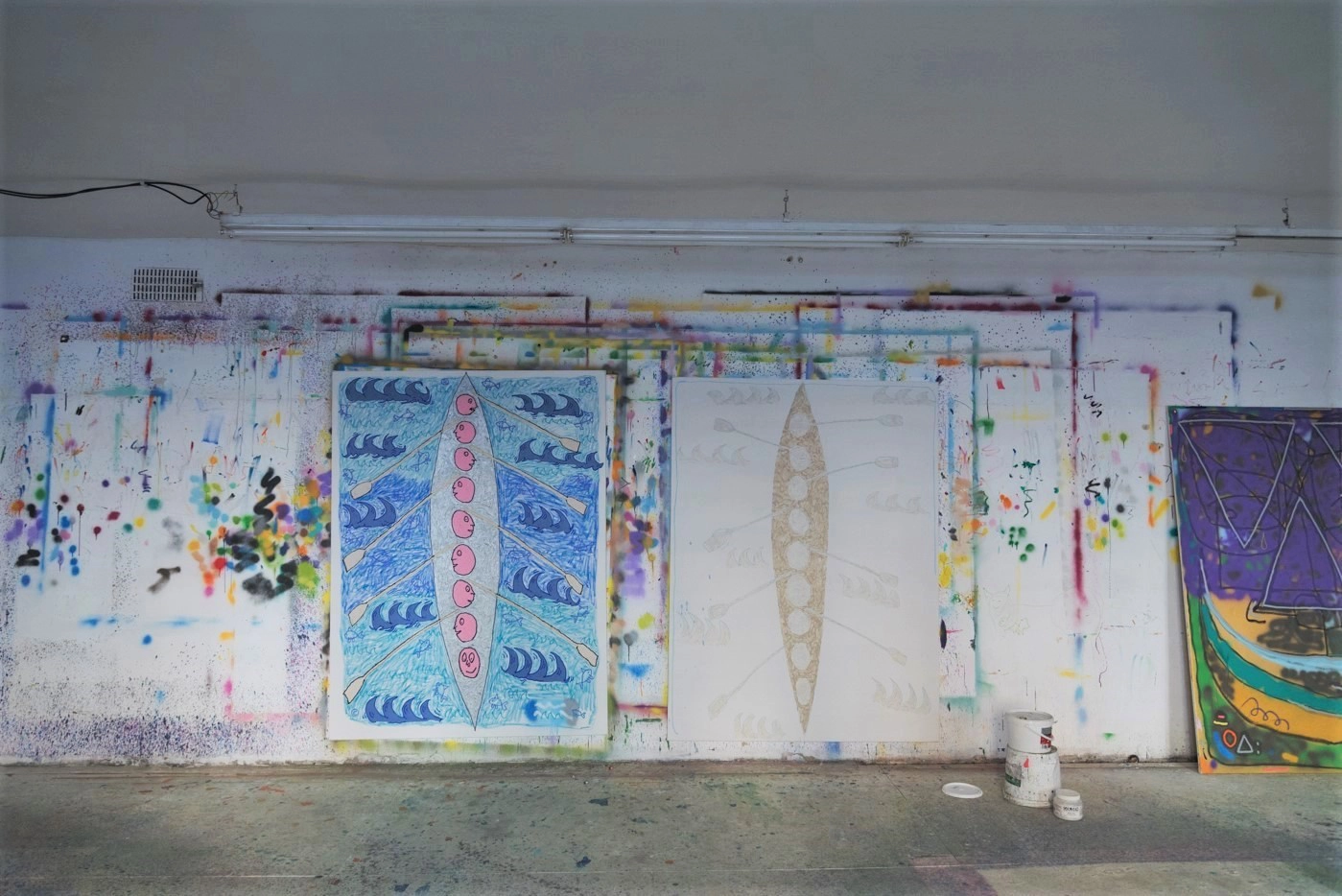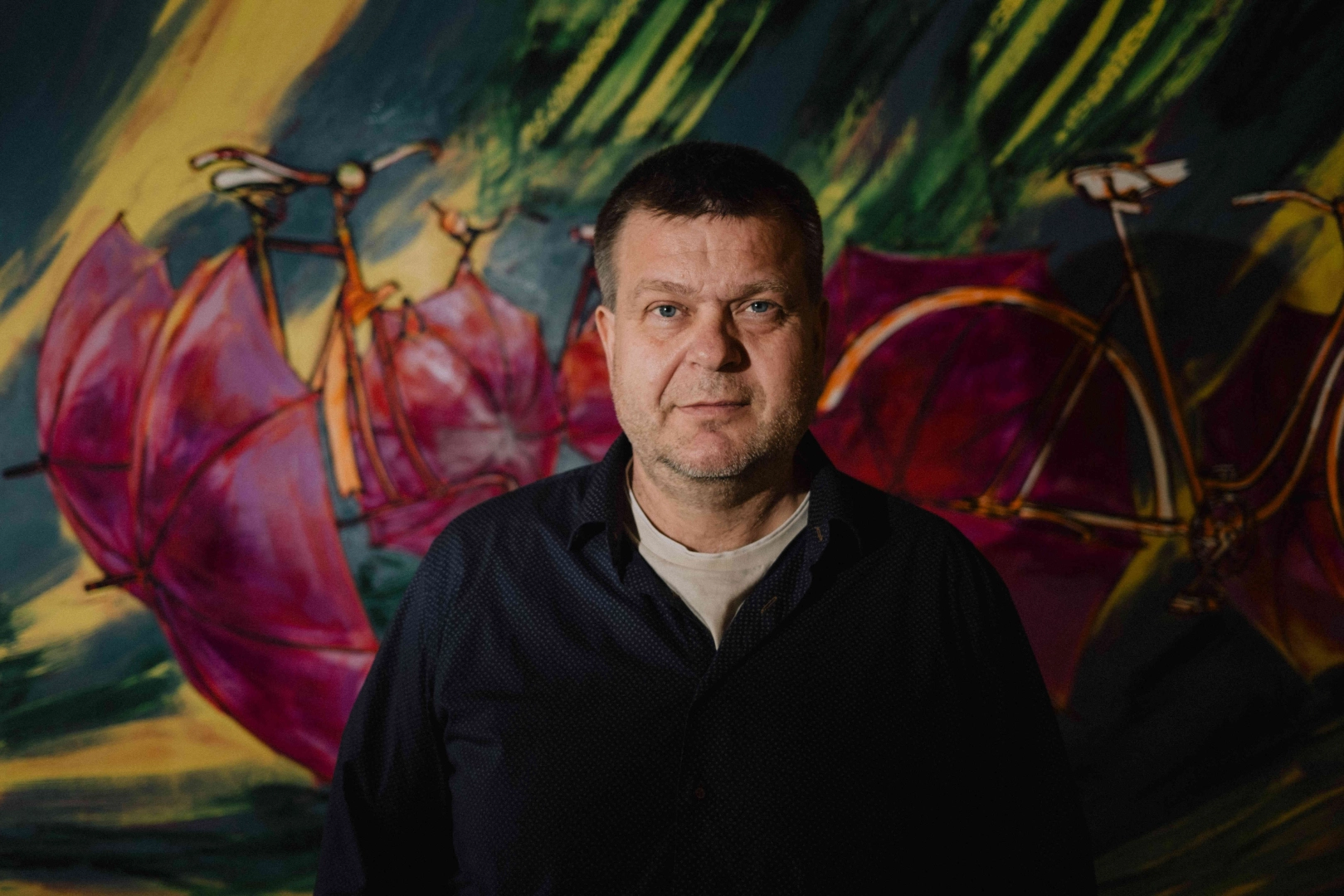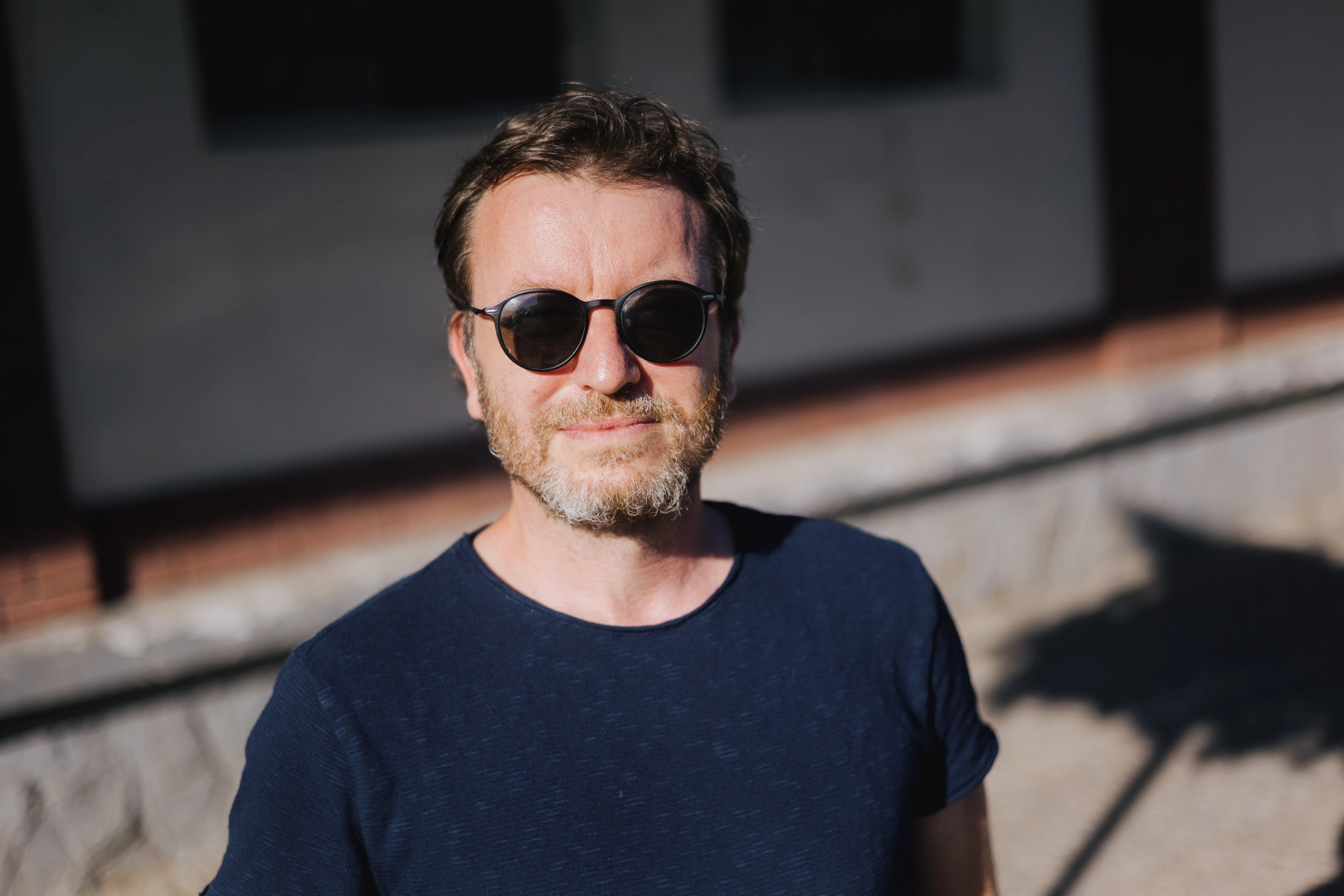He started with graffiti before painting on canvas for the first time at 27 years old. Now he is one of the most interesting artists of the young generation in the Czech Republic and has even sold one entire exhibition for bitcoin. Who is Julius Reichel - which is not even his real name - and what has he prepared for the ROW ROW ROW exhibition?
.jpg)
In your work, you often react to the internet, to the world oversaturated with information that you view as a limitless well of inspiration. You layer your paintings with text, memes, signs, aliens, and references to the Illuminati. Is it possible to read your paintings as some sort of code or message that is being passed on to humanity through these symbols?
The question is the answer. That’s cool. Look, basically it changes from series to series, from month to month, day to day, hour to hour. Sometimes, fierce decisions and earthquakes are what’s needed. And after that, what was true before isn’t true anymore. I used to feel this way with certain series - that the painting is a sort of space for storytelling. For others, it was just pure joy from the colour variation. It really depends. However, for Sport in Art, I’ve prepared a symbolic meme triptych that can be interpreted as heads, fish…
So you made three paintings for the ROW ROW ROW exhibition. jsi tedy namaloval tři obrazy. Can you elaborate on their creative process?
Assignment. Thoughts. Boat. Ship. Space-ship. The oars are antennas. Waves, clouds. But seriously… It’s a 2D projection of my contemplation on the topic of rowboats. Rowing. Rhythm. Speed. Water. Fast as an arrow. Joy. Competing. Friendship. When I considered what interests me the most about this topic - it was the shape of the boat. And that a whole team is squished inside it, connected by a rhythm. I thought that was the coolest thing. I had other ideas, but the three boats - gold, silver and bronze - felt right for me.

Your paintings are usually an abstract jumble of colours and their own logic, while the boats for ROW ROW ROW suddenly feel very concrete. We see nine heads, piranhas, and waves. What was it like to work with rowing as a source of inspiration? Are there other works of yours that are inspired by sport?
I’ll start at the end – probably no. However, there is rhythm in that mix of colours. For me, rhythm is in the gesture, it’s a basic building block of the composition. When I work, I often jump around like crazy, so there’s a bit of sport in everything. I had a few more abstract versions for ROW ROW ROW but then I realised that meditating over the water’s surface isn’t fun enough. I concluded that if it’s supposed to be entertaining then it has to look like this.
What does sport mean to you? Do you consider art and sport to be two irreconcilable worlds?
To me, sport is primarily movement. It’s being crazy, giving in, denial, going beyond your limits, pushing boundaries, and perseverance. But also courage, diligence, friendship, responsibility, joy, fight, and so on. However, I’d like to know who’s a bigger egomaniac - an athlete or an artist.
.jpg)
The cradle of your work was graffiti and tagging trains. Is it more reasonable for you to paint under a pseudonym? Was painting on canvas a natural progression for you? Do you think it corresponds with your laid back painting style?
I guess. I first started using a pseudonym when I used to write poetry. The trains are in the past, it’s pointless to return to that. The canvas was a necessity for survival.
You are said to erase borders between painting and object. What should readers who don’t know you imagine based on this statement?
That I also make sculptures and spatial installations. But sometimes it just sounds good. Sometimes I feel this tension to transport the painting into space. Create some sort of a spatial synapse. That sounds smart, no?

Somewhere I read this beautiful sentence „In this totally rationalised world the path to pointlessness means the most to me. To do something just ‘cause and to do it for years. It’s a strange kind of melancholy.“ I really like that. Are you continuing with this? Can this be considered your life’s creed?
I guess so. I just progressed a bit, so when I feel old and lame I’ll disappear and I won’t bother the world with my ‘wisdom’.
.jpg)
Once, in Karpuchina Gallery, you traded your entire exhibition for bitcoin. What does cryptocurrency mean to you? What is your stance on NFTs?
The whole thing was kind of a coincidence that turned into a PR hellscape. By the end of it, I felt like a trained monkey. But the atmosphere was great. The gallery is in charge of the crypto, we had a deal that we'll leave it in the gallery fund for 4 years and see what happens. I’m curious. NFTs are a whole other chapter, a crazy kind of boom. My position on them is based on speculation, expectation, a lot of wasted money and sleepless nights and also a few fulfilled dreams. I’m interested in what will be in 10 years. And I think it’s great that nobody can tell for sure.
Julius Reichel (*1981 in Kaplice) studied at the Academy of Fine Arts in Prague, afterwards he graduated from Jiří David’s atelier at the Prague Academy of Arts, Architecture and Design. He is considered to be one of the most outstanding representatives of contemporary Czech painting. Although he only painted his first work at 27-years-old he has a rich prior experience from painting graffiti on trains. He exhibitide in the Czech Republic and abroad, and he traded one of his exhibitions entirely for bitcoin. He is the first Czech artist to be included in the Binance NFT crypto market with the title 100 Creators. His work blurs the definitions between paintings and objects, he is fascinated by the world of the internet and he explores the universal visual code that’s going to work not only in today’s reality but also in the future.




